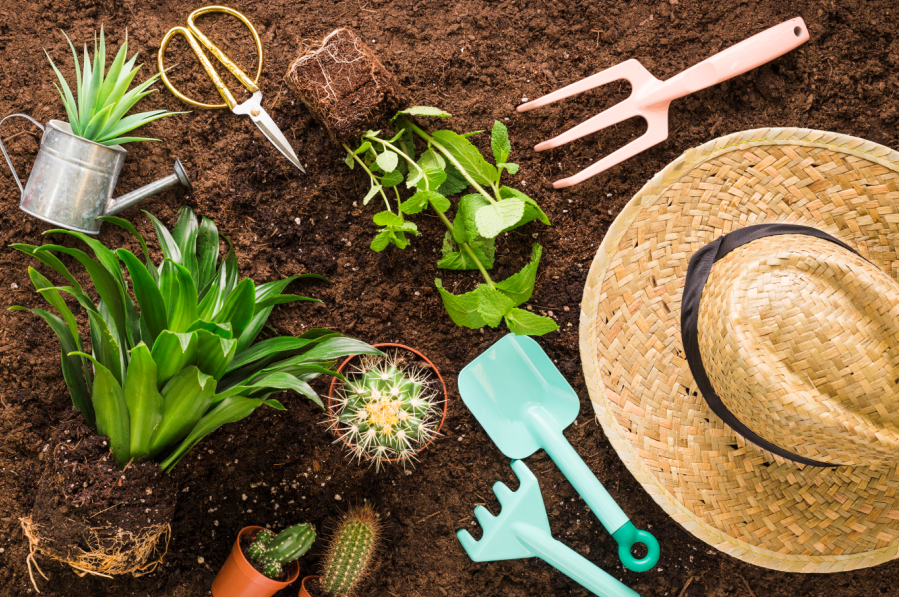
Composting hastens the natural process of decay, which every organic matter will experience. The output of composting, which is like the topsoil, is full of microorganisms, such as bacteria and fungi, that helps with the regularization of nutrients and pH levels. The composting process makes vitamin-rich soil that will help the health of the plants and make them grow easily.
Starting up as a newbie in composting can be very intriguing but also very scary. There are a lot of challenges in the process and a lot of things you should consider before even thinking of composting. You should be prepared with the knowledge and the equipment that you will use in composting.
Here are four easy steps to prepare yourself to begin composting.
Segregate Your Garbage
Waste segregation is a process where you separate your garbage into divisions. The divisions include liquid waste, solid waste, organic waste, recyclables, and hazardous waste. Segregation of garbage is important since it helps reduce the waste that goes to the landfill.
Composting is connected to waste segregation since you cannot put all your waste into your compost bin. You can put most organic waste that you have segregated from the rest of your garbage into your compost pit. But there are things that you shouldn’t put into your pit like feces of your dog, leftover food that contains dairy, and colored papers.
Dedicate Time and Effort
Every task we do in our daily lives should be a priority; starting a compost pit requires you to have the dedication and implores you to put effort into maintaining it. A compost pit needs to keep moist – occasionally watering it will do it. Do not let the compost get dry since the microorganisms that you need to decompose materials thrive in a humid location.
Oxygen is also very important for the microbes living in your compost pit. It is essential that you toss and turn your compost every now and then so that air can be re-introduced into the pit. This can be done with a shovel, pitchfork, or if you are brave enough, your bare hands.
Making a compost pit is not a one-time activity. You need to add material continually, so you get more fertilizers at the end of the composting period. Try to add wastes to your compost pit weekly or every two weeks. But be patient since composting can be a very tedious process since you cannot predict precisely the date and time on which your compost is ready to use.

Allot Space for Your Compost
Backyard composting is the best home composting technique since it allows the worms that help strengthen the soil to get into your compost. A plot of land close to your garden can be an ideal place to keep a pit since it would be more efficient to transfer the materials to and from your garden. Keeping it near a water source would also be beneficial since keeping the moisture of your compost at an optimum level is critical.
With indoor composting, your bin should be kept near your kitchen so that it would be convenient to place your scraps in it. But always heir to the side of caution when putting your compost bin inside your home, it might be a convenient place to put it in, but it will also be a smelly problem to fix when someone knocks it over.
Prepare Your Materials
Before even thinking about starting your compost pit, you need to prepare fully the equipment you need. These helpful tools will surely be a great help for composting:
- Spade - This tool is used to break down material with its pointed tip.
- Oxygenator - This helps the convection of air and allows aeration to stimulate decomposition.
- Water Hose - Water hose is used to control the moisture in the soil, making the humidity ideal for disintegration.
- Pitchfork - Used for turning the material in the compost pit, which also allows aeration.
- Screens - This is used after the composting process to remove large clumps of material that hasn’t decayed.
- Shovel - This is used for acquiring the sediments contained in the lower portion of your compost pit.
Remember to use the correct tool that is needed for a specific purpose. Misusing tools is the top reason for wear and breakage. If used properly, these tools will help hasten the composting process.
Following these tricks will help you prepare to make an efficient compost bin at home. Composting isn’t just about having fun; it is also about becoming more and more eco-friendly. Reducing waste is one of the top priorities nowadays, and every little contribution to that priority is a big help. Starting composting is an easy task to do, but continuing composting is a commitment that takes dedication and hard work to accomplish.
About the Author
Alex is a full time blogger at Disposal Answers where he publishes useful tips and information about garbage disposals, composting and waste management in general to reach, help and educate more people about the importance of being eco-friendly.
You may also like
Gardening Tips That Save You Green
How to Start a Vegetable Garden
How Your Garden Could Help Save Bees
